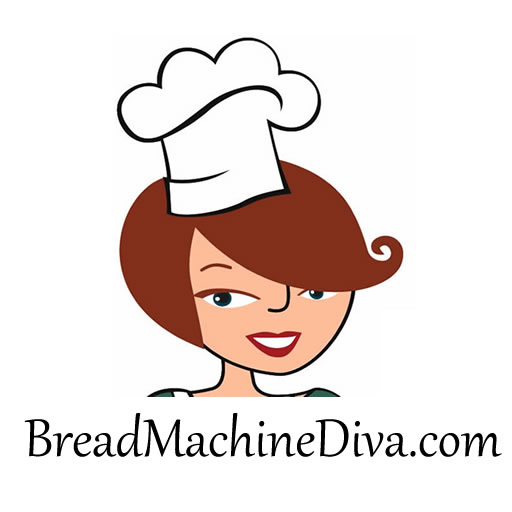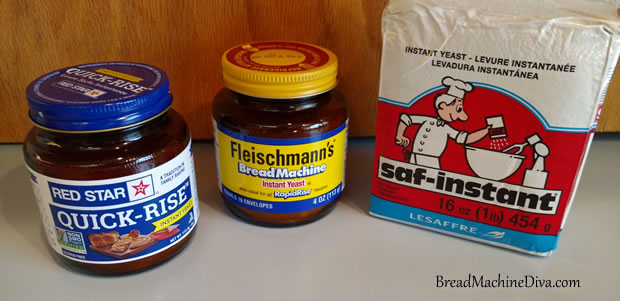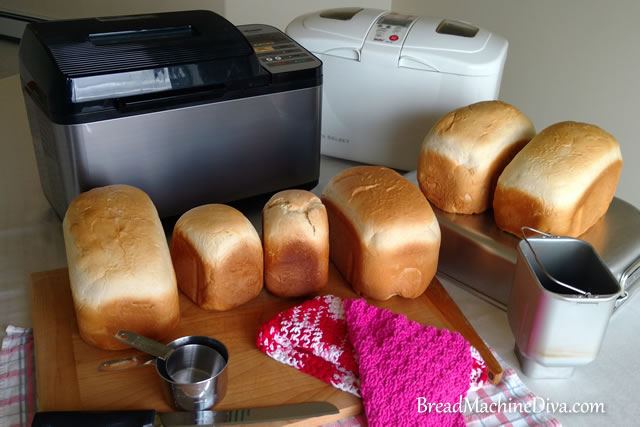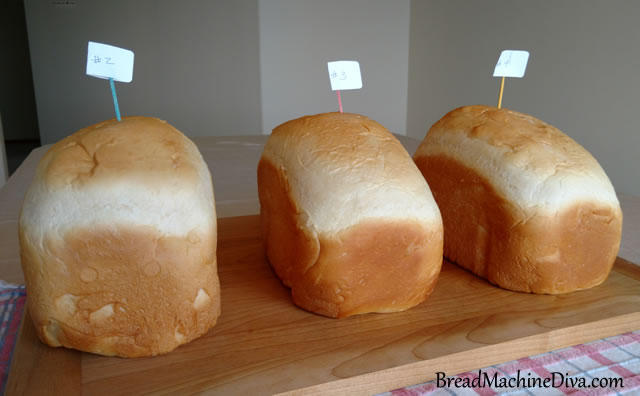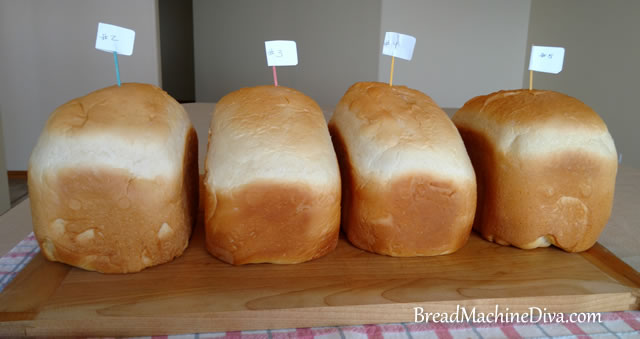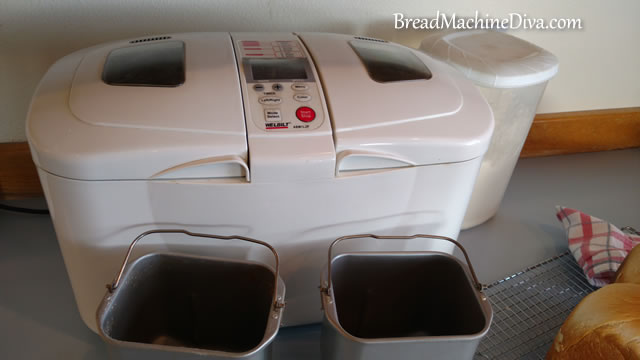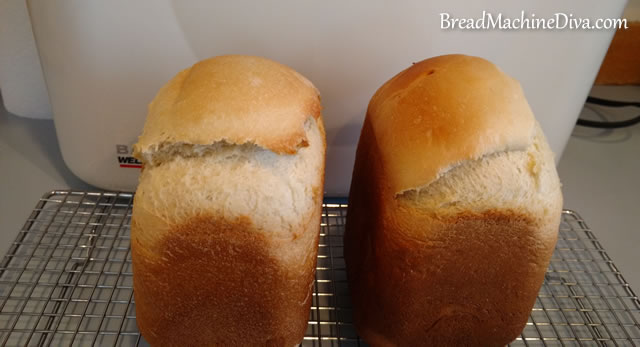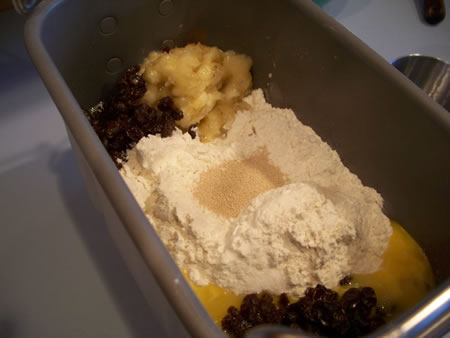Bread Machine Yeast? Instant Yeast? Active Dry Yeast? What’s the Difference?
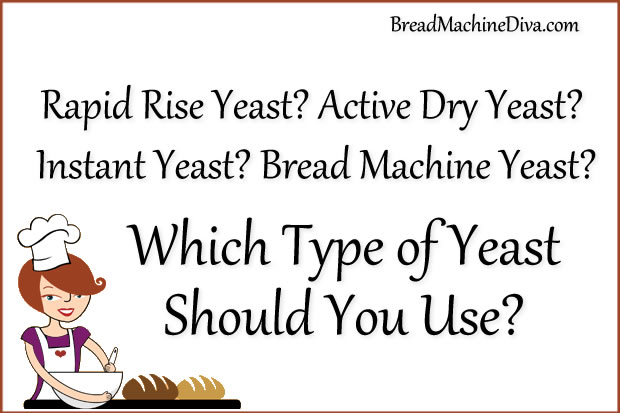
Last Updated on October 11, 2021 – Originally Published in March of 2017
Bread machine yeast. Rapid rise yeast. Active dry yeast. Instant yeast. Why are there so many types of yeast? Why does yeast have to be so complicated and confusing?
To be honest, much of what I’ve read about yeast is bewildering.
For example, The No-Fuss Bread Machine Cookbook, states that “The best bread yeast for bread machines is bread machine yeast or active dry yeast.” However, the recipes in the book involve instant yeast or bread machine yeast. Active dry yeast isn’t even mentioned and I never saw an explanation about instant yeast versus bread machine yeast.
My mother gave me her Welbilt bread machine. (Thanks, Mom!) The manual has recipes that can use active dry yeast, quick-rise yeast or bread machine yeast. That’s great, but the amount of active dry yeast in all the recipes is wrong.
If you’re like me, all you want to know is what type of yeast to use in your bread machine.
Here’s the Big Secret about Yeast
I didn’t catch onto this for a while, but once I did it confused me even more. Despite all the types of yeast sold in the grocery store and despite all the bread recipes calling for different types of yeast . . . there are really only two types of yeast.
Let me say that again, there are just two types of yeast. Those two types are instant yeast and active dry yeast.
Bread machine yeast and rapid rise yeast are just types of instant yeast. This means that bread machine yeast, rapid rise yeast and instant yeast can all be used interchangeably.
Also, if you know how to convert between the two main types of yeast (instant and active dry), then you can use either type of yeast in your recipes.
All of this was a little hard for me to take in, so I tested everything and found it to be true.
What Does Yeast Do?
Before we get into what type of yeast to use, let’s start with the basics. What does yeast do exactly?
Yeast makes bread rise.
Yeast is made up of small, single-celled organisms that eat simple sugars. That process gives off carbon dioxide and alcohol. The carbon dioxide that yeast produces is in the form of tiny bubbles that makes bread dough expand and stretch.
Active Dry Yeast
One type of yeast, probably the most common type, is active dry yeast.
Historically, active dry yeast needed “activated” by dissolving it in water before using it. They called this proofing.
However, changes in the manufacturing of active dry yeast enable active dry yeast to be in bread machines without proofing. Yes, you read that correctly.
Do not proof active dry yeast when using it in the bread machine.
Instant Yeast
Instant yeast came on the scene in 1973.
Instant yeast has smaller yeast granules than active dry yeast. It may also contain a dough conditioner (ascorbic acid) to help make the bread rise more quickly.
Bread machine yeast and rapid rise yeast are both types of instant yeast.
Yeast Tests
There are only two main types of yeast? Bread machine yeast, instant yeast and rapid rise yeast are all the same thing?
It was hard to take in so I decided to test.
I went wild and spent a few days making a dozen loaves of bread. Some loaves of bread were made with my beloved Zojirushi bread machine. Other loaves of bread were made with my Mom’s Welbilt machine.
It got a little insane. Not to worry though, I sliced and froze all of the bread. None of it went to waste.
Instant Yeast Test – Are Instant Yeast, Bread Machine Yeast and Rapid Rise Yeast Interchangeable?
To test the statement that instant yeast, bread machine yeast and rapid rise yeast are interchangeable, I made three loaves of sour milk bread.
All of the loaves were made with whole milk. (The milk wasn’t actually sour.) All of the loaves were made using the quick (rapid-rise) cycle of my bread machine. The only difference between the loaves of bread was the yeast.
I made these loaves of bread with (from left to right) bread machine yeast, SAF instant yeast and rapid rise yeast. As you can see, the loaves look the same.
Instant yeast, bread machine yeast and rapid rise yeast can be used interchangeably.
Formula for Substitute Instant Yeast for Active Dry Yeast and Vice Versa
Here’s another thing that I’ve learned. If you know how to convert the amounts of instant yeast to active dry yeast (and vice versa) you can use either type of yeast in any recipe.
1 teaspoon active dry yeast = 3/4 teaspoon instant yeast
Important Facts:
Bread machine yeast and rapid rise yeast are both types of instant yeast.
1 package of yeast (all types) contains 2 1/4 teaspoons or 7 grams of yeast
Yeast Conversion Test One
The first test involved me using active dry yeast in the quick cycle of the bread machine.
Again, these loaves were all made using my sour milk bread recipe. All of the loaves were made with whole (not sour) milk. All of the loaves were made using the quick (rapid-rise) cycle of my bread machine. The only difference between the loaves of bread was the yeast.
Notice that there’s one more loaf now.
These loaves of bread were made with (from left to right) bread machine yeast, SAF instant yeast, rapid rise yeast and active dry yeast.
I used 3 teaspoons of yeast for all the yeast types except active dry. With active dry, I used the formula above and used 3 3/4 teaspoons yeast. (1 1/4 times 3 = 3 3/4) As you can see, the conversion worked.
Yeast Conversion Test Two
Test two compared active dry yeast versus rapid rise yeast in the basic cycle.
As I said earlier, my mother gave me her bread machine. It’s a Welbilt dual loaf machine that actually allows me to make two one-pound loaves of bread at once. It was perfect for this experiment.
I used this sandwich bread recipe for both loaves of bread. I used the basic cycle with the medium crust setting for both loaves.
However, the loaf on the left was made with 1 teaspoon of quick rise (instant) yeast. The loaf on the right was made with 1 1/4 teaspoon active dry yeast.
Again the conversion worked.
What Yeast to Use in the Bread Machine
In general, any of the types of yeast mentioned in this article are fine. I use active dry yeast except when I’m using the rapid-rise cycle. In that case, I use instant yeast.
Some bread machines, but not all, require that the liquid be heated to a certain temperature before being added to the bread pan. This is done to provide a yeast-friendly environment.
My Zo has a preheat cycle. So I just put the liquids in the bread pan and the machine takes care of heating everything up the correct temperature before it begins the first kneading cycle.
My Mom’s Welbilt doesn’t have a preheat cycle and doesn’t say to heat the liquid. So I didn’t and it worked fine. I just used warm tap water.
In terms of actually placing the ingredients in the pan, most bread machine manufacturers recommend that yeast be placed in a sort of nest in the bread machine pan.
Here’s a picture of how my bread machine pan looks when I’m making Banana Raisin Bread. See the yeast nestled in the flour?
How to Store Yeast
I buy active dry yeast at Costco. It comes in a large package that I transfer into two glass jars once I get home. I keep both of the glass jars in the refrigerator.
It’s the same with instant yeast. After opening the container, I store the yeast in the refrigerator.
I’ve heard of people keeping their yeast in the freezer. They say it works, but I’ve never tried it.
